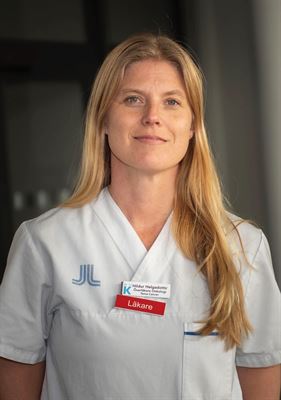Steep rise in skin cancer since 1960s

The risk of developing more than one skin melanoma over a ten-year period has seen a ten-fold increase in Sweden since the 1960s, a new study by researchers at Karolinska Institutet and Lund University published in The Journal of the National Cancer Institute reports. The researchers suspect that the increase is due to a change in holiday customs with more active sunbathing and overseas trips to southern climes.
“There are many health benefits to being outside, but it would be good if studies like this could encourage people to protect their skin better and find other ways to enjoy their holidays than by sunbathing,” says principal investigator Hildur Helgadottir, consultant at Karolinska University Hospital in Solna and researcher at the Department of Oncology-Pathology, Karolinska Institutet, Sweden.
Skin cancer of the melanoma type is one of the fastest increasing tumour diseases in numerous countries, including in Sweden, where there were 4,543 new cases of invasive melanoma and 508 melanoma-related deaths reported in 2018. The main cause of this constant increase is thought to be an excessive exposure to UV radiation.
Using the Swedish Cancer Register, researchers have now studied trends in the risk of developing more than one skin melanoma. The strength of the register lies in its long history and its high degree of coverage and reliability.
“The Cancer Registry started in 1958, which is roughly when Swedes started to go on package holidays to the sun,” says Dr Helgadottir. “More active sunbathing and overseas trips to southern climes have led to more UV exposure of the Swedes’ often sun-sensitive skin. This is probably one important reason for the sharp rise in the risk of developing recurrent melanoma.”
The researchers studied individuals who had developed their first skin melanoma in the 1960s, 1970s, 1980s, 1990s and 2000s and how common it was for them to develop additional melanomas over a ten-year period. In the 1960s, only 0.7 per cent of the cohort developed more than one melanoma, but since then the risk has gradually increased to about 7 per cent in the 2000s. Moreover, a significant proportion of the 2000s cohort developed more than two melanomas, and this was previously very rare. The increase was more dramatic amongst men and older individuals.
Another question was whether the increase in risk for multiple melanoma was only a reflection of the observed increase in melanoma for the population as a whole. However, the results showed that the upgoing curve for multiple melanoma was much steeper than that for the general increase in risk.
“This trend is serious, since earlier research has shown that people who develop more than one melanoma have a worse prognosis,” says Dr Helgadottir. “Even though awareness of the risks of UV radiation has increased, reports from the Swedish Radiation Safety Authority show that Swedes continue to devote much of their holidays to active sunbathing, and half report that they have been sunburnt.”
“This is the first study to demonstrate how the risk of developing multiple melanoma has increased over time,” she continues. “I think it is very likely that a similar trend would be found in other countries that have seen an upward melanoma curve.”
The study was a collaboration between Karolinska Institutet and Lund University in Sweden and the University of Leeds in the UK. The research was financed by the Swedish Cancer Society and the Cancer Research Funds of Radiumhemmet.
Publication: “Multiple primary melanoma incidence trends over five decades, a nationwide population-based study”. Hildur Helgadottir, Karolin Isaksson, Ildiko Fritz, Christian Ingvar, Jan Lapins, Veronica Höiom, Julia Newton-Bishop, Håkan Olsson. Journal of the National Cancer Institute, online 24 June 2020, doi: 10.1093/jnci/djaa088.
For more information, please contact:
Hildur Helgadottir, researcher, consultant
Department of Oncology-Pathology, Karolinska Institutet
Cancer theme, Karolinska University Hospital, Solna, Sweden
Email: hildur.helgadottir@sll.se, hildur.helgadottir@ki.se
Phone: +46 707 55 77 22
Contact the Press Office and download photo: ki.se/pressroom
Karolinska Institutet is one of the world’s leading medical universities. Our vision is to advance knowledge about life and strive towards better health for all. Karolinska Institutet accounts for the single largest share of all academic medical research conducted in Sweden and offers the country’s broadest range of education in medicine and health sciences. The Nobel Assembly at Karolinska Institutet selects the Nobel laureates in Physiology or Medicine.
Tags:


